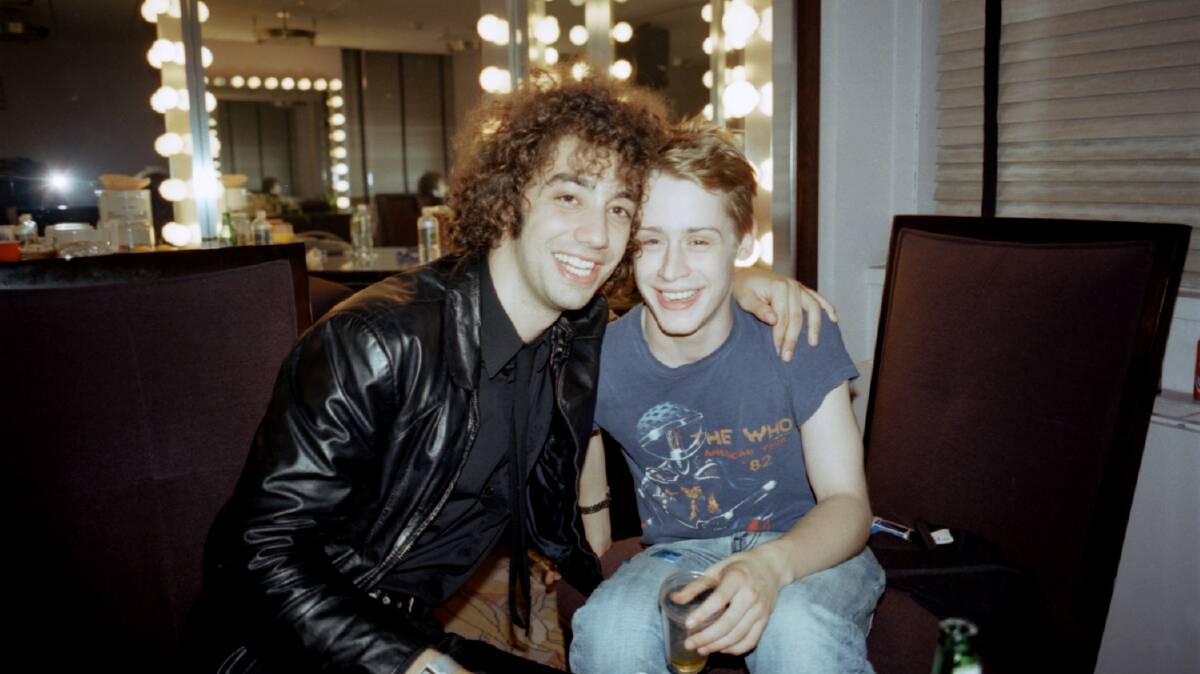Meet Me in the Bathroom
MA15+. 111 minutes. Three stars.
Subscribe now for unlimited access.
$0/
(min cost $0)
or signup to continue reading
For a certain demographic, the bunch of talented musicians documented in this film - Interpol, LCD Soundsystem, The Mouldy Peaches, The Strokes, Yeah Yeah Yeahs - are their era, their heroes, their generation of Blur and Oasis, or Beatles and Stones, or Harry and Taylor.
It wasn't my era, the punk-rock informed wave of artists out of New York around the time of 9/11, or at least, I was busy working four jobs and putting myself through two degrees and didn't have the cash to buy albums or the time to listen to them.
And so, to me, it feels like an anthropological experience viewing these self-indulgent bougie brats get to swan around playing their guitars and drinking and being idolised for it.
I wonder if my feelings, watching these kids and their antics, are what the proletariat felt when reading pamphlets about Lord Byron and his nepo-baby bacchanals and their absinthe parties at Italian lakeside villas.
In her 2017 book Meet Me in the Bathroom, sometime Rolling Stone and NME music journalist Lizzy Goodman documented the era that had fascinated her in her early writing career.
In the years just before the Twin Towers came down, New York's indie-rock scene was a breeding ground for talent, and before Napster came along to challenge the industry's financial models, indie cred and coolness were intangible but bankable commodities.
A little ignorant of the industry around them were a bunch of kids who enjoyed music and enjoyed each others' company, among them, Julian Casablancas and his friends who formed the band The Strokes and would define a new era in careless cool with their music and ethos.
Not far behind The Strokes were pals like Karen O and the band Yeah Yeah Yeahs.
Much of the first half of Dylan Southern and Will Lovelace's documentary charts the forming of these two bands and their early successes, mostly utilising private home movie footage and era interview footage, feeling less reflective from two decades of experience and more current to the then-contemporary concerns of these emerging musicians.
Once Southern and Lovelace have established their characters, which include a handful of other bands that emerged out of the friendship groups of Casablancas, Karen O and co., including Interpol and TV on the Radio, we move on to that giant early-aughts disaster and its impacts.

While there is quite a lengthy section of footage from the lower Manhattan streets on 9/11, the filmmakers gloss over much of the impact of the disaster on these young lives, except to explain the then rise in fortunes of Brooklyn as a creative hub.
In this creative milieu, these friendship groups and their musical interests evolve further, punk meeting electronic beats, furthering the sound of bands like Interpol and, taking up much of the final act, James Murphy's creation of DFA Records and the band LCD Soundsystem.
Southern and Lovelace have built a time capsule: as they are only using of-its-day footage and interviews, we have no context for the acts' ongoing evolution and impact.
The door is left open for a different filmmaker to wrap it all up in a contextualising bow.
It certainly gave me a pleasurable few hours after my screening to Google these people and listen to their albums on Spotify.
Some I've never heard of - which probably answers those "whatever happened to" questions unanswered by the doco.

